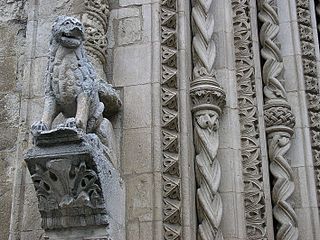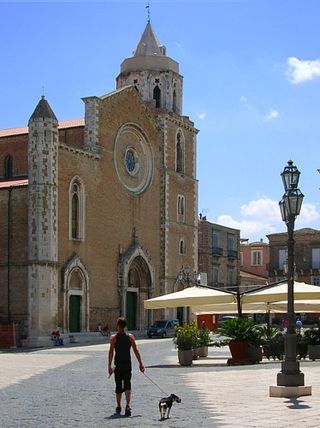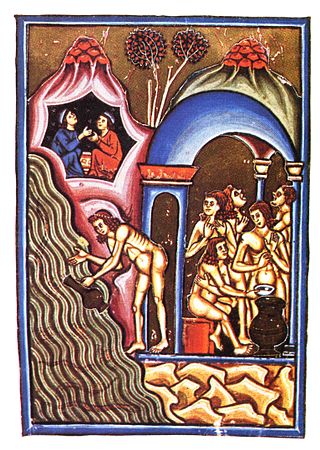Life
There is some disagreement about the life of Saint Pardus. He is often described as the first bishop of Larino, but also as a bishop somewhere in the Peloponnese (or possibly Myra) who after being driven from his see took refuge in Rome. There is also some uncertainty in Pardus's chronology: he is usually connected with the 7th century, and the conventional year of his death is 650, but there is a strong tradition linking him to Pope Gregory II (715-731).
After Pardus had sought refuge in Rome, the pope (whether Gregory II or another) offered him many possible bishoprics. Pardus however chose to retire to the region around Lucera in Foggia, where he intended to spend the rest of his life in prayer. This was not a random choice, as Lucera had formed part of the ancient Magna Grecia and many communities of Greek descent were established there.
On his way to Lucera however Pardus spent three years in Larino, the ancient Larinum, where he preached the Gospel. The legend is that he was a little old man with a white beard, and was missing a thumb.
Once in Lucera, he helped build two churches, and then spent his last years in penitence and prayer until his death.
His feast day is 26 May, but in Larino the feast of San Pardo is celebrated over 3 days, 25–27 May.

Pope Gregory I, commonly known as Saint Gregory the Great, was the 64th Bishop of Rome from 3 September 590 to his death. He is known for instituting the first recorded large-scale mission from Rome, the Gregorian mission, to convert the then largely pagan Anglo-Saxons to Christianity. Gregory is also well known for his writings, which were more prolific than those of any of his predecessors as pope. The epithet Saint Gregory the Dialogist has been attached to him in Eastern Christianity because of his Dialogues. English translations of Eastern texts sometimes list him as Gregory "Dialogos" from the Greek διάλογος, or the Anglo-Latinate equivalent "Dialogus".

Pope Nicholas III, born Giovanni Gaetano Orsini, was head of the Catholic Church and ruler of the Papal States from 25 November 1277 to his death on 22 August 1280.

Saint Valentine was a 3rd-century Roman saint, commemorated in Western Christianity on February 14 and in Eastern Orthodoxy on July 6. From the High Middle Ages, his feast day has been associated with a tradition of courtly love. He is also a patron saint of Terni, epilepsy and beekeepers. Saint Valentine was a clergyman – either a priest or a bishop – in the Roman Empire who ministered to persecuted Christians. He was martyred and his body buried on the Via Flaminia on February 14, which has been observed as the Feast of Saint Valentine since at least the eighth century.

Saint Lawrence or Laurence was one of the seven deacons of the city of Rome under Pope Sixtus II who were martyred in the persecution of the Christians that the Roman emperor Valerian ordered in 258.

Orvieto is a city and comune in the Province of Terni, southwestern Umbria, Italy, situated on the flat summit of a large butte of volcanic tuff. The city rises dramatically above the almost-vertical faces of tuff cliffs that are completed by defensive walls built of the same stone.

Bruno of Cologne, OCart, venerated as Saint Bruno, was the founder of the Carthusians. He personally founded the order's first two communities. He was a celebrated teacher at Reims and a close advisor of his former pupil, Pope Urban II. His feast day is 6 October.

Larino is a town and comune of approximately 8,100 inhabitants in Molise, province of Campobasso, southern Italy. It is located in the fertile valley of the Biferno River.

Spoleto Cathedral is the cathedral of the Archdiocese of Spoleto-Norcia created in 1821, previously that of the diocese of Spoleto, and the principal church of the Umbrian city of Spoleto, in Italy. It is dedicated to the Assumption of the Blessed Virgin Mary.
The Patrimony of Saint Peter originally designated the landed possessions and revenues of various kinds that belonged to the apostolic Holy See. Until the middle of the 8th century this consisted wholly of private property; later, it corresponded to the territories under Papal sovereignty, but from the early 13th century the term was applied to one of the four provinces of the States of the Church.

Saint Zenobius (337–417) is venerated as the first bishop of Florence. His feast day is celebrated on May 25.

Guardialfiera is a comune (municipality) in the Province of Campobasso in the Italian region Molise, located about 30 kilometres (19 mi) northeast of Campobasso. It sits on a hilltop overlooking Lake Guardialfiera, which was created as a result of the damming of the Biferno river.

The Diocese of Lucera-Troia, sometimes called Nocera, is a Latin diocese of the Catholic Church in Apulia, in southern Italy, with its episcopal seat at Lucera Cathedral. The diocese reached its present configuration in 1986, by combining the older diocese of Lucera with the diocese of Troia, the seat of which was Troia Cathedral, now a co-cathedral of the united diocese.

The Catholic diocese of Larino is located in the province of Campobasso, Southern Italy, c. 18 mi. south of Termoli. It existed from the 7th century until 1986. In that year it was united into the diocese of Termoli-Larino. It was a suffragan of the archdiocese of Benevento.

Saint Michael the Archangel is referenced in the Old Testament and has been part of Christian teachings since the earliest times. In Catholic writings and traditions, he acts as the defender of the Church and the opponent of Satan. He also assists people at the hour of death.
Pietro Parenzo was a mayor of the Italian Comune of Orvieto during the 12th century. He was assassinated in 1199 by the adherents of Catharism and became honored as a saint and wonderworker after his death. He is the patron saint of the city of Orvieto.
Saint Pelinus or Pelinus of Brindisi was a Basilian monk, later bishop of Brindisi in Italy, martyred at Corfinio and made a saint in 668. His feast day is Dec. 5.

Peter Damian was an Italian reforming Benedictine monk and cardinal in the circle of Pope Leo IX. Dante placed him in one of the highest circles of Paradiso as a great predecessor of Francis of Assisi and he was declared a Doctor of the Church on 27 September 1828. His feast day is 21 February.

Larino Cathedral is a Roman Catholic cathedral located in Larino in the Province of Campobasso, Molise, Italy. The dedication is to the Assumption of the Virgin Mary and Saint Pardus. Formerly the episcopal seat of the Diocese of Larino, it has been since 1986 a co-cathedral in the Diocese of Termoli-Larino.

Germanus was the bishop of Capua from 519 or shortly before until his death. He played a major role in bringing to an end the Acacian schism, the first major schism that divided the Christian church between east and west.

Gregory (559–630) was a Sicilian Christian prelate who served as Bishop of Agrigento from 590 until at least 603 and was a correspondent of Pope Gregory I. He is the probable subject of two semi-legendary saint's lives and possible author of a commentary on Ecclesiastes, although both of these identifications have been questioned.














